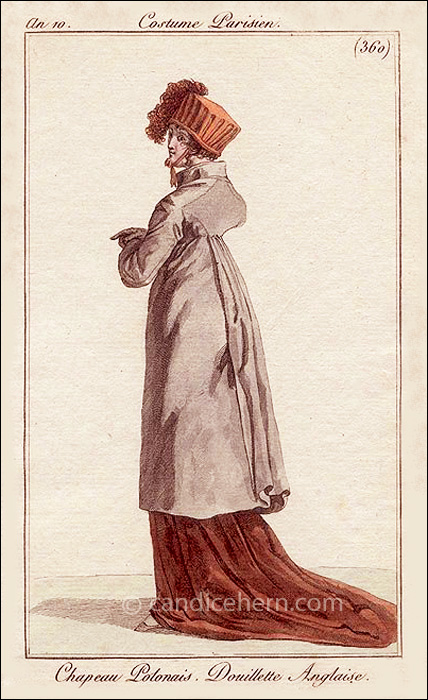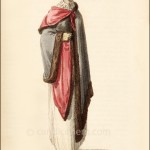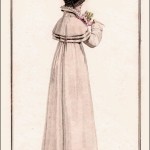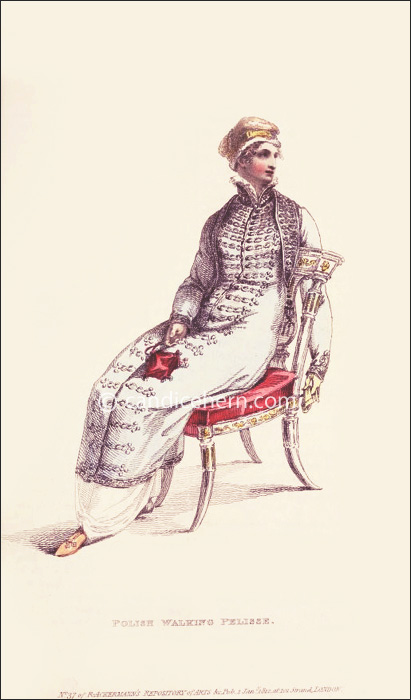Journal des Dames et des Modes, Paris, January 30, 1802.
“Chapeau Polonaise. Douillette Anglaise.”
This is a very interesting print in that it shows a woman’s overcoat. It’s not a pelisse, but something more substantial. It is called an English overcoat in the short description at the bottom of the print. Many gentlemen’s outer garments were modeled after English country wear. Outer coats that were generally named greatcoats by the British are variously named redingotes or carricks in France. So perhaps this coat is a female version of the English greatcoat.
The tailoring, though, is very feminine. The diamond-shaped back panel is seen on some female riding habits, and the pleats falling from the high waist are beautifully done. The collar is high, and the loose shoulders look as though they are part of a raglan sleeve. As it is a January print, we can probably assume the coat is made of wool or other warm fabric.
The dress beneath the coat also appears to be made of a heavy fabric, and includes a substantial train.
The Polish cap is often seen in British prints as well, inspired by the four-pointed square-topped hat worn by the Polish cavalry and lancers, as a variation of the shako. The addition of the plume gives it a feminine touch. Throughout the long period of the Napoleonic Wars, ladies’ fashions on both sides of the Channel included military styles in outer garments and hats.








